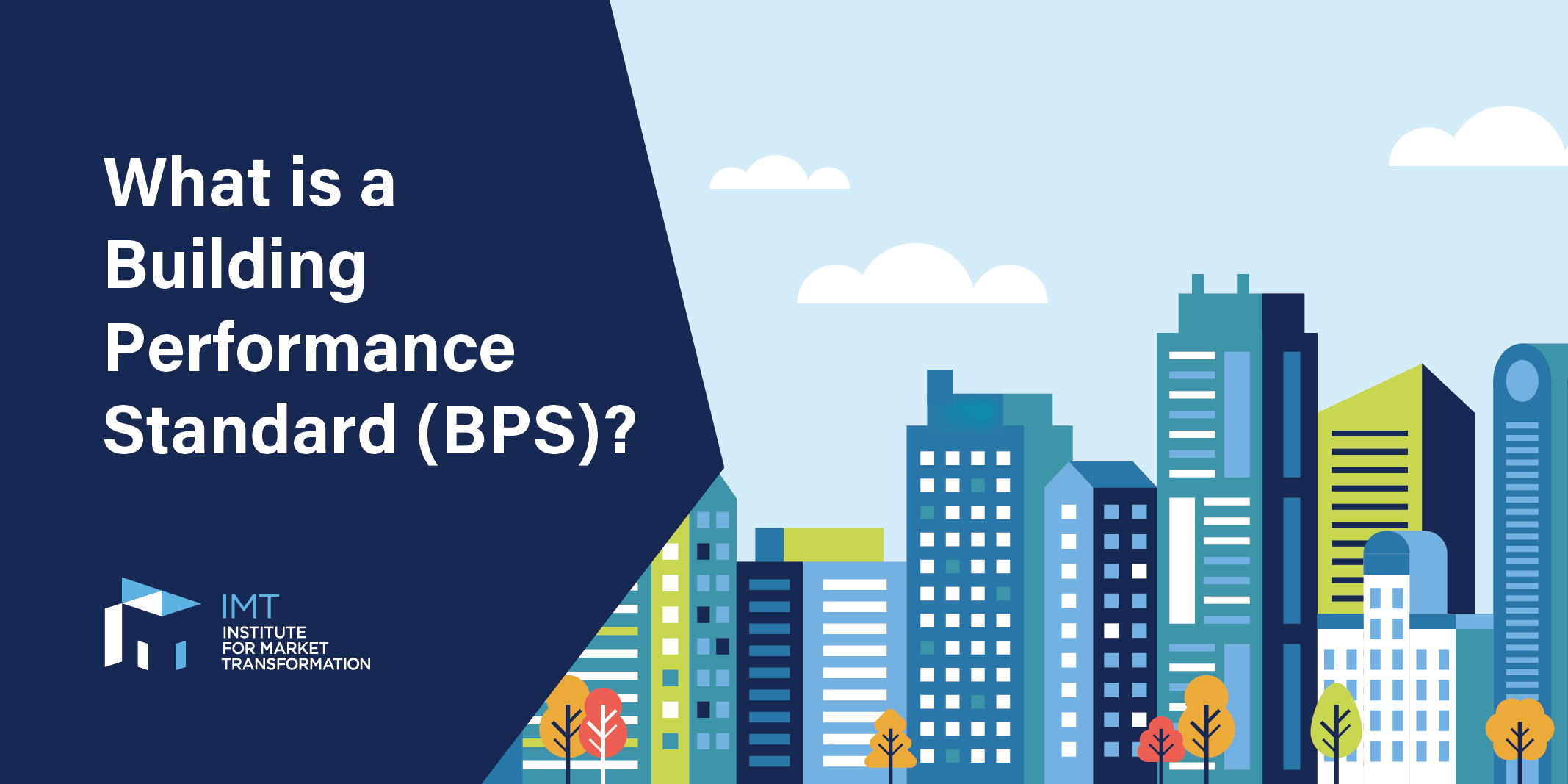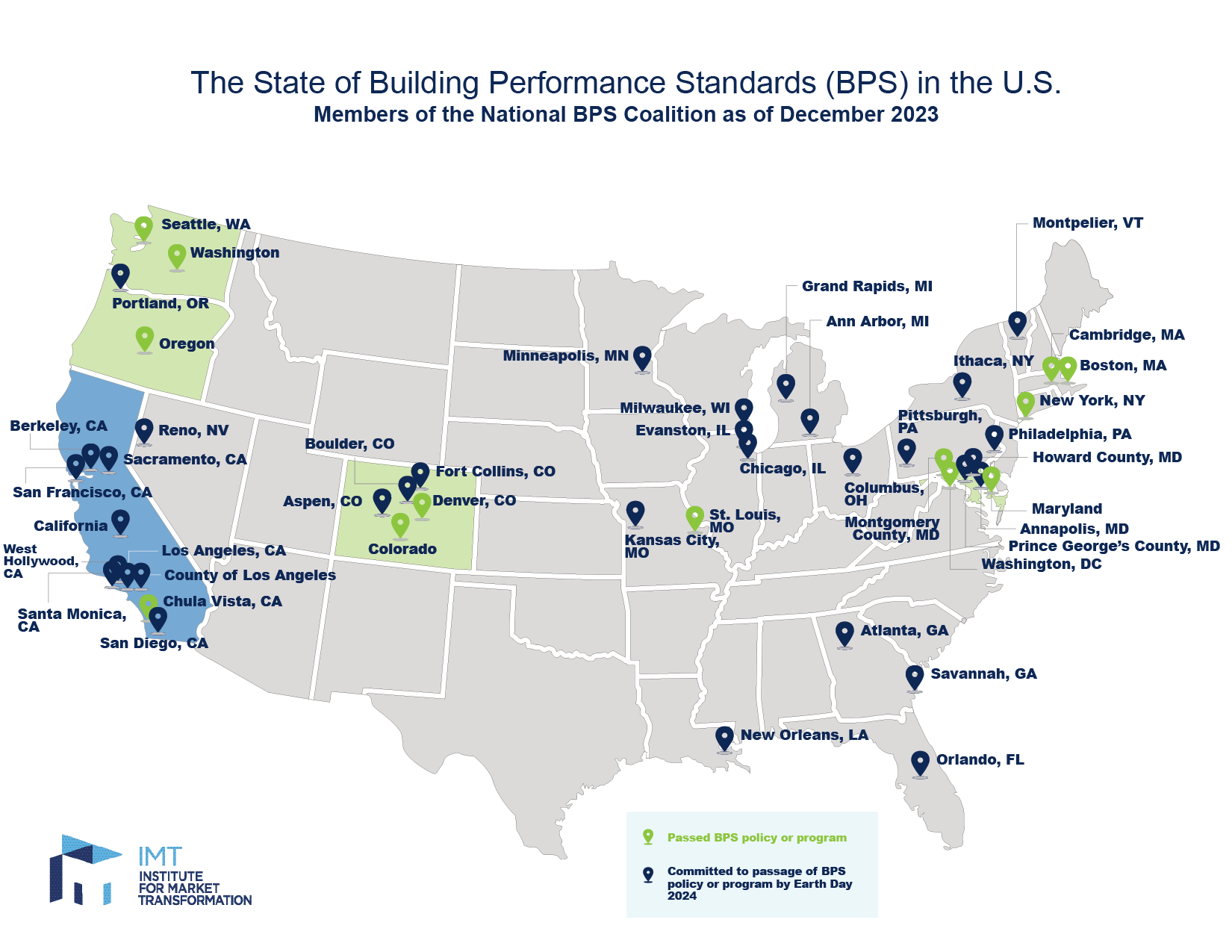Fighting climate change means taking serious steps to reduce carbon emissions generated by buildings.
Understanding this, leading-edge states and local governments are shifting to mandatory building performance policies. The most powerful of these is a building performance standard (BPS).

What is a Building Performance Standard?

What are the benefits of adopting a BPS?
Jurisdictions are looking to BPS because they are the most powerful and direct tool for driving improved performance in existing buildings. BPS can bring additional benefits to implementing jurisdictions by fueling local job creation, economic growth, achieving increased renewable energy share, and reducing energy costs.
Climate Change Resilience
Improving Communities
Lower Bills, Better Air Quality
Supporting Workforce Needs
Snapshot of BPS Adoption Across the U.S.
IMT proudly supports the National Building Performance Standards Coalition launched by the White House in January 2022 and we work closely with all jurisdictions that have passed or are considering a BPS. See our resource collection for related maps, guides, and graphics.


Roadmap for Creating Equitable and Effective Building Performance Standards
Creating successful building performance standards consists of five main activities centering inclusive outreach and engagement throughout the process





Transformative Solutions
Meaningful community engagement unleashes unprecedented capacity to develop and implement solutions to current crises



